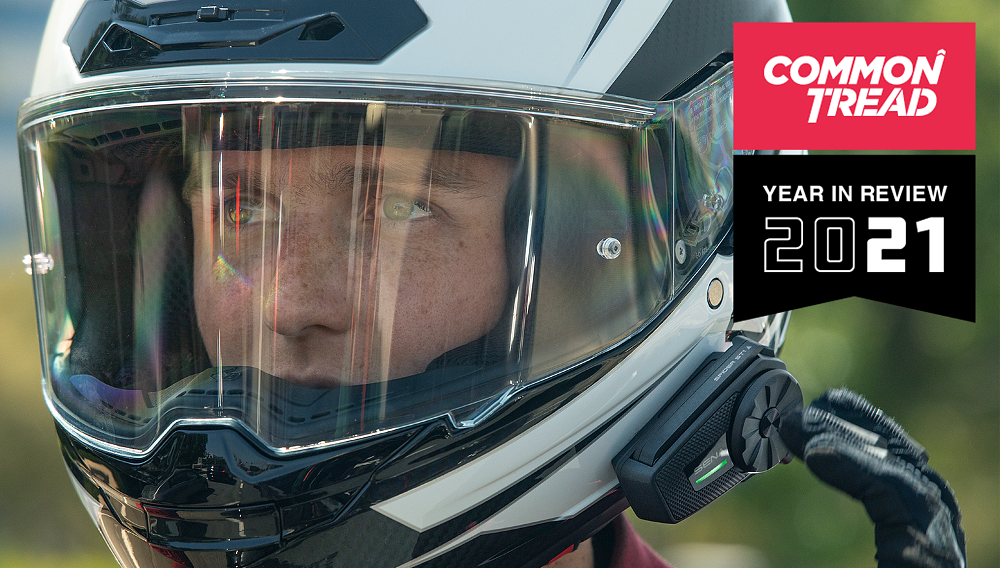At Common Tread, keeping up with what's happening in the motorcycle world is our job. So to encourage more due diligence, every year we ask our regulars to name their personal choices for the best and worst trends of the year.
Here's what they had to say this year.
Ari Henning: Short supply, the bad and the good
The cargo ships are still backed up in the Port of Los Angeles, which means dealerships are still spreading a handful of bikes out across the showroom to make it look like customers have options. At the same time, they’re applying a "market adjustment" to the tag hanging off the handlebar, which means buyers are left with fewer, more expensive options.
That shortage of new bikes has also caused a sharp increase in the prices of used bikes. An acquaintance who regularly flips bikes estimates that the used market has seen a 20 percent rise since the pandemic hit, and unscrupulous sellers are trying to cash in on the bull market by listing total piles for absurd prices. It all adds up to a very difficult market for buyers and my choice for negative trend of 2021.

The flip side is my positive trend: Lots of neglected projects are getting completed as people realize it's their best option, and that makes me smile. While the dealerships' sales teams are struggling, the service departments are slammed. My friends who run shops are busier than ever as people pull the sheets off old bikes and bring them in to get tuned up and ready to ride. Sales here at RevZilla corroborate it: Consumables like tires, chains and batteries are strong, which suggests that people are caring for (and enjoying) the bikes they already own.
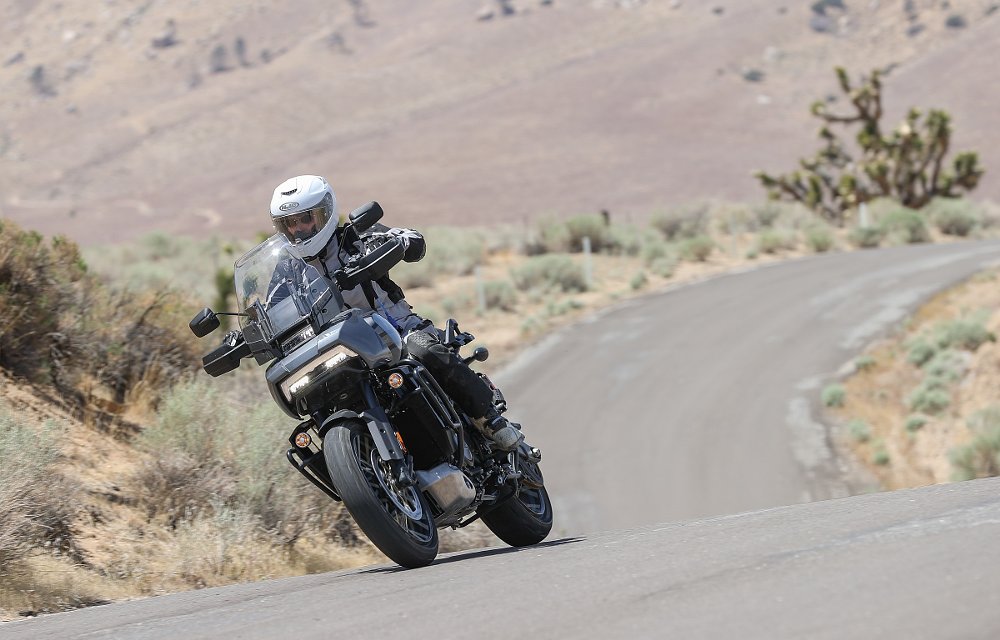
Spenser Robert: Harley hits versus Versys miss
My positive trend: Harley friggin' Davidson! I was hesitant to dedicate my entire positive trend callout to one manufacturer, but the truth is H-D took some big swings this year and I think they should be applauded for that. It debuted an all-new ADV model, rebooted the Sportster, rebranded the Livewire, and seem to be having a lot of fun with their electric bicycle brand. For a company that's been the poster child of tradition for the last 100 years, I admire the cultural risk it's taking by trying something new — and I think the world of motorcycling is better for it.
I've recommended the previous generation Kawasaki Versys 650 LT (2015-2021) to more people than I can count based on its great price, excellent luggage, stellar fuel range, lovely handling, and general approachability. My only real complaints were the throttle response, engine character, and lack of a factory center stand. So why was I severely disappointed in the update Kawasaki rolled out for my favorite bike? The 2022 model received styling tweaks, a better windscreen, a new dash, traction control, and a higher price tag. Maybe I'll feel differently when I ride it, but it feels like Kawasaki made the bike more complicated without actually making it better and that’s a trend I could certainly do without.
Spurgeon Dunbar: Riding with friends but nothing to ride
I've already touched on this in our Thanksgiving Day article, but my positive trend in 2021 was the return of in-person events. In 2020, everything from my local enduro races to the Red Bull Grand Prix of the Americas was canceled and we learned about the newest motorcycles by gathering around a computer screen instead of heading for the airport to go ride them. 2021 has given us a bit of a return to normalcy. Local racing returned to the woods, MotoGP returned to Texas, Andy Greaser is testing a Triumph Tiger Sport 660 in Portugal. RevZilla even got into the events arena with our first ever Get On! Moto Fest outside of Dallas and Get On! ADV Fest in the Black Hills of South Dakota.
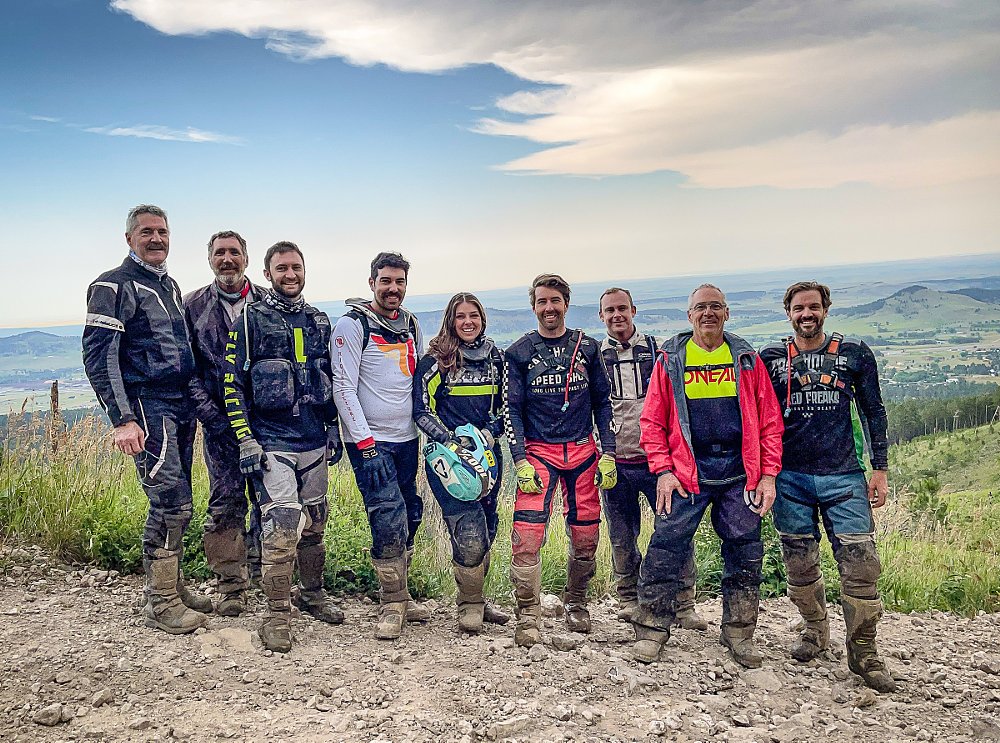
Having volunteered at the latter, as well as Del Val's Michaux Dual Sport, I can say it was good to get out and ride with new people again. It was also good to get back to testing new bikes again, such as the Kawasaki KLR650, Triumph Trident 660, Indian Chief and Harley-Davidson Pan America. My only hope is that this trend continues into 2022 as the world stabilizes from the turbulence of the past two years.
Ari has already mentioned the negative trend of global supply chain issues and I got a firsthand experience. I signed up my girlfriend for an off-road riding course for her birthday at this year's Over and Out women's event. She loved it, but when I tried to "Let the Good Times Roll" by purchasing a Kawasaki KLX230L for her, I found empty showrooms and inflated prices for used motorcycles. While this pinch was good if you were trying to thin out the herd (I sold two bikes this year, my KTM 1090 Adventure R and 1976 Honda CB550), it was a lot harder and more expensive to buy a motorcycle. How many new riders looking to get into the sport or existing riders looking to trade up or add a new machine to the garage were frustrated? Sales were good this year, but I believe they could have been even better without the disruptions that kept dealerships from maintaining a healthy inventory of machines.
Jen Dunstan: E-progress and simplicity lost
The motorcycle world has always lagged behind the auto makers in going electric but there seemed to be some real progress in 2021. Ducati announced its entry into a MotoE partnership with Dorna, Kawasaki announced a focus on electric vehicles, Triumph continued development of its electric concept bike, Husqvarna teased a Vitpilen e-motorcycle concept, Harley-Davidson created a dedicated separate business for the LiveWire brand of electric motorcycles and just this week announced plans to take the company public. Yes, electric motorcycles can be a polarizing subject. As a former e-hater turned electron-burning crusader, I know very intimately what it's like owning and riding electric motorcycles. I don’t foresee, nor do I care to see, a future in which electric motorcycles completely replace traditional ICE bikes. That being said, the growth and development of the e-motorcycle segment is still worth celebrating as it will introduce bikes into new places and to a whole new generation of riders.
One of the more unfortunate trends of 2021 was seeing formerly accessible bikes like the Ducati Monster and Harley-Davidson Sportster morph into models that are more unattainable compared to their predecessors. In 2020, the Ducati Monster came in multiple sizes, as small as the 797 cc version at an MSRP of $9,295. Now in 2021 the only Ducati Monster is 937 cc with an MSRP of $11,895. The same holds true for Harley, with the 2020 Sportster coming in many sizes, with the smallest being the 883 cc model at $8,999, but in 2021 it became the Sportster S with a 1,250 cc engine and a price increase to $14,999. While the new models are definite improvements — the Sportster, in particular, is much more powerful than its predecessor — they are no longer the easy entry into the brand they used to be.
Figures aside, what is truly being lost is a bit more intangible but arguably of more importance. That would be the loss of the versatility and simplicity of these entry-level bikes that inspired generations of customizers, from regular joes to accomplished builders. The new 2021 models are so complex in terms of electronics, body work and build that it may be a dead-end for those vibrant expressions of individualism the models were once known for.
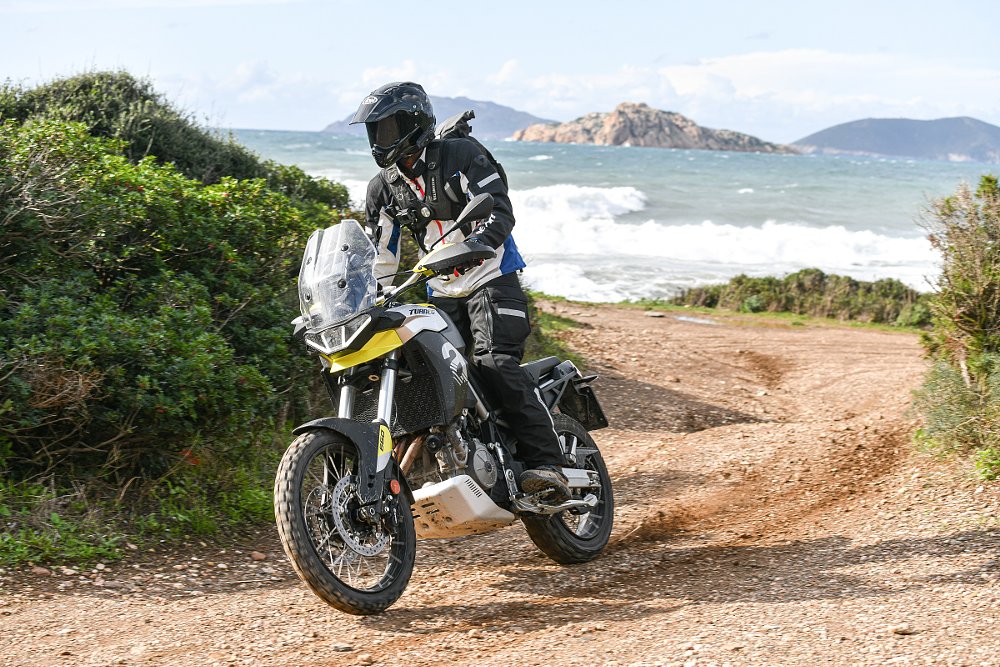
Andy Greaser: Sweet middleweights and no off-road inflation
Ten years ago, Yamaha wouldn't have dreamed of abandoning the legendary YZF-R6. And replacing it with an approachable middleweight, powered by a parallel twin? Blasphemy!
The ZLA West Coast team already shared their thoughts on the YZF-R7, and looking back on 2021, it was just one of many new motorcycles in a rapidly growing class of practical, fun, and fairly affordable middleweight options. Aprilia now offers a range of 660 cc twins with the addition of the the Tuareg and the Tuono. Triumph is hitting its stride with the new 660 cc triple line, headlined by the popular new Trident, and most of the Japanese manufacturers have jumped in on the action, too. It’s great to see so many capable offerings in an accessible class. Competition improves the breed.
Wearable motorcycle airbags took a quantum leap forward in recent years with the introduction of smart technologies from Dainese and Alpinestars. Now, regular folks can ride with a relatively affordable version of the lifesaving protection used at the highest levels of roadracing. My negative for 2021 is that off-road airbags with similar tech are still nowhere to be seen for consumers. However, they are available for the pros: Dakar racers are now required to wear airbag protection in competition. How much longer do the rest of us have to wait?
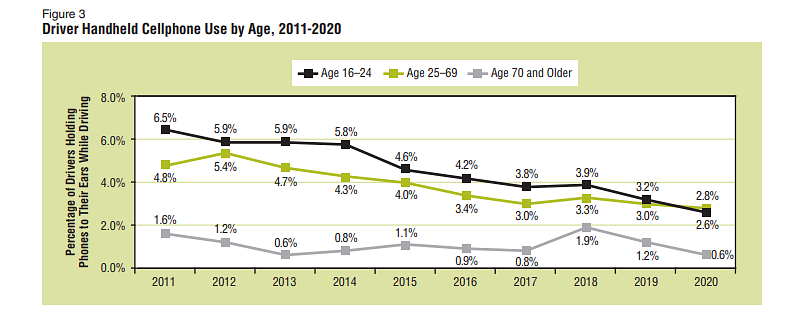
Lance Oliver: Less yakking, too many kids dying
Here's a positive trend many of you probably won't believe, because when we make assessments based on anecdotal evidence and chance observation, we tend to think "things are worse than ever." But on an issue of importance for motorcyclists and other vulnerable road users — distracted driving — there's a positive trend in the United States. The National Highway Traffic Safety Administration does studies of cell phone use by drivers and the numbers of drivers talking on a handheld phone has steadily declined over the years, particularly among young drivers (possibly because of efforts in the schools to address distracted driving). It's a tiny improvement, but it is a positive trend, and creates hope that just as drunk driving became stigmatized and related deaths declined, distracted driving is also becoming less socially accepted. (Two caveats: Use of devices for other purposes, such as navigation, is not declining and in two states, Missouri and Montana, it's still legal to text while driving. Be careful out there!)
The worst trend of 2021 was teenagers dying while chasing their dreams of succeeding at the highest levels of road racing. One of the stories I'm proud of publishing at Common Tread this year was Mark Gardiner's informed piece on the response to the death of 14-year-old Hugo Millán in a European Talent Cup race, which was followed by the even higher profile death of 15-year-old Dean Berta Viñales, cousin of MotoGP star Maverick Viñales, in a World Supersport 300 race. The formula for identifying talent — put a bunch of hungry kids on equal race bikes — is also a formula for disaster when something goes wrong in those tight packs of ambitious kids who know how much their families have sacrificed to give them a fleeting chance at glory. Dorna responded by raising age limits and limiting grid sizes, but it still feels like the long-term trend of a youth cult taking over road racing has gotten too extreme. A rider like Superbike World Champion Troy Bayliss, who started road racing in his 20s, would have no chance at a world-championship-level career today but in 2022 we'll still be putting 13-year-olds on fast roadracing motorcycles.










